Baking’s a blast, right? You’re in the zone, recipe in hand, ready to create some kitchen magic. Then, bam!
You reach for the vegetable shortening and—nothing. Nada. The tin’s as empty as a promise of just one more episode on a Netflix binge.
Before you toss in the towel or dash to the store, we’ve got an ace up our sleeve.
Here’s the scoop on five killer swaps for vegetable shortening that might just save your baking day.
Trust us, these tips are about to make your baking escapades a whole lot smoother.
What’s Vegetable Shortening?

Vegetable shortening is a highly versatile cooking and baking product made from hydrogenated vegetable oils.
Its particular concoction of mainly soybean, cottonseed, and/or sunflower oil helps to produce a rich, creamy texture that works wonders in everything from cakes to pie crusts.
The flavor remains neutral; it won’t affect the taste of your baked goods, but it will perfectly unite all the ingredients together.
It brings a certain lightness to baked items due to its lower water content, which often makes things like biscuits and donuts much flakier than their butter-based counterparts.
It can be used directly by scooping it out with a spoon or melted before use.
Both forms provide rich moisture during baking and are great for absorbing flavors while adding structure and shape.
The 5 Best Substitutes for Vegetable Shortening
If you are looking for an alternative to vegetable shortening, there are several substitutes that can be used in recipes.
Here are the five best alternatives to vegetable shortening:
1 – Lard
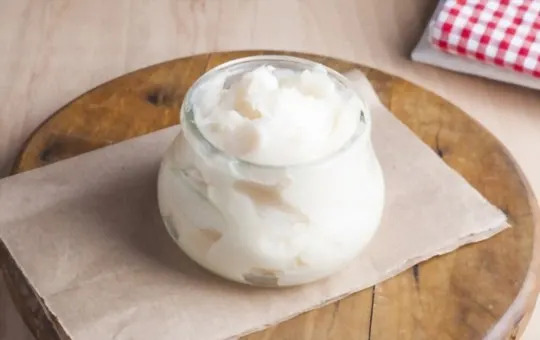
Lard has been used for centuries as a traditional cooking fat, and it is made from rendered pork fat.
It has a strong flavor, and its texture can be described as slightly soft and flaky.
When baking, lard can be substituted for vegetable shortening by using an equal weight based on the recipe’s measurement of vegetable shortening.
In some cases, it can also make a great substitute in recipes calling for butter since the taste and texture are comparable.
The high smoking point of lard is perfect for frying all kinds of dishes like tortillas or empanadas.
Additionally, it aids in retaining moisture when slow-cooking meats like ribs or shoulder cuts.
2 – Butter
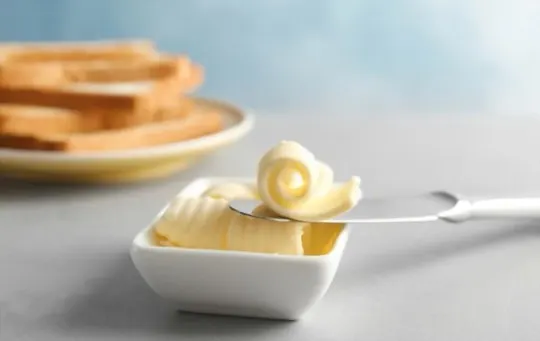
Butter has been used for centuries and continues to be a beloved ingredient in many dishes today.
It’s made by churning cream or milk until its texture is thick, smooth, and spreadable.
Its flavor is rich and creamy, with a faint hint of saltiness depending on which variety you choose.
While butter can be enjoyed all by itself, it can also add great flavor to baked goods like cakes, cookies, and pies.
For those who are avoiding animal products or want to reduce their dairy intake, there’s a viable alternative: vegetable shortening.
When baking, substituting an equal amount of vegetable shortening for the butter can result in a similar taste and texture in the finished product without having to sacrifice flavor or quality.
3 – Coconut Oil
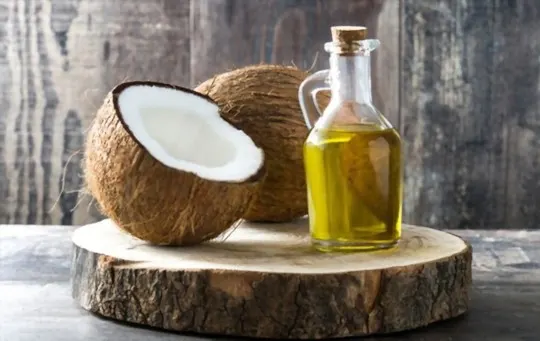
Coconut oil is an all-natural, vegan ingredient that has a range of uses in the kitchen.
Whether it be for baking, sautéing, or frying, this sweet-smelling oil provides a delicious flavor in many dishes and desserts.
Coconut oil is solid at room temperature and has a creamy texture when melted, making it a great substitute for vegetable shortening.
This oil can also be used to add moisture to cakes as well as flavor to any recipe.
To substitute regular vegetable shortening with coconut oil, measure out the same amount of coconut oil that the recipe calls for in terms of vegetable shortening and melt it until it becomes liquid before adding it to the ingredients.
Adding coconut oil can provide an extra dimension of taste and texture, transforming your dishes into something delightful.
4 – Margarine
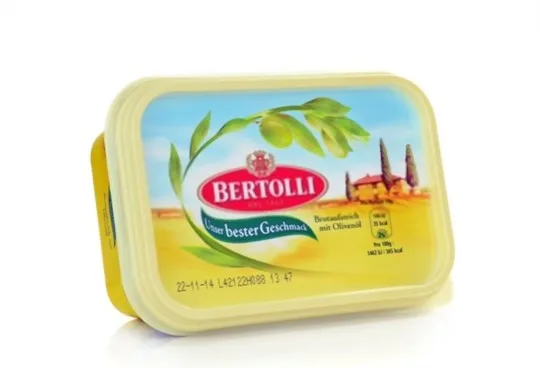
Margarine is a butter-like spread usually made from vegetable oil and water.
It is typically made with added salt, lemon juice, food coloring, and artificial flavorings for a more palatable taste.
As such, margarine has about the same soft, velvety texture as that butter, but it does not contain any dairy products.
In fact, margarine has much less cholesterol than butter, so you can use it as a substitute for vegetable shortening in baking and cooking recipes.
For instance, when baking cakes or other pastries, you can replace all or part of the shortening with margarine to make your end product lighter and healthier.
Additionally, when replacing shortening in cooked food recipes like sautéing vegetables or frying eggs, you can use melted margarine in place of vegetable oil or shortening – making the meal guilt-free and healthier.
5 – Bacon Fat
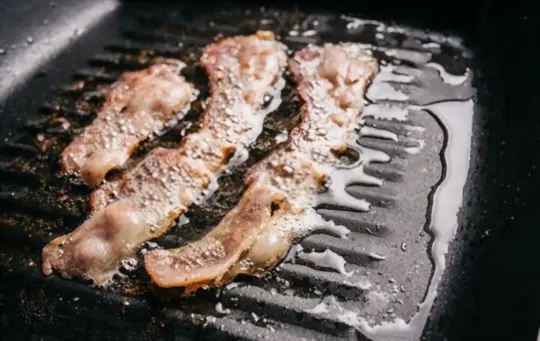
Bacon fat is a classic principal ingredient in many Southern recipes, and with its intense flavor, it’s easy to understand why.
When cooled, bacon fat solidifies, making it the perfect butter or vegetable shortening substitute.
It has a distinct smoky taste which is unique and flavorful.
The texture is more coarse than melted butter, and when used in baking, the result can be quite crunchy, which many enjoy as a special treat.
When substituting bacon fat instead of vegetable shortening in a recipe, use approximately one-third less than what is called for originally, as bacon fat typically makes a stronger impression; bacon fat adds an extra level of tasty contrast to classic recipes; give it a try today.
Conclusion
In conclusion, it’s easy to find the perfect vegetable-shortening substitute when you know where to look.
Whether you’re looking for a vegan, healthier, or just plain delicious alternative, there are plenty of options available.
You can try substituting butter, coconut oil, margarine, or even bacon fat to add an extra layer of taste and texture to your recipes.
Whatever you choose, these alternatives will surely make your dishes delicious and unforgettable.
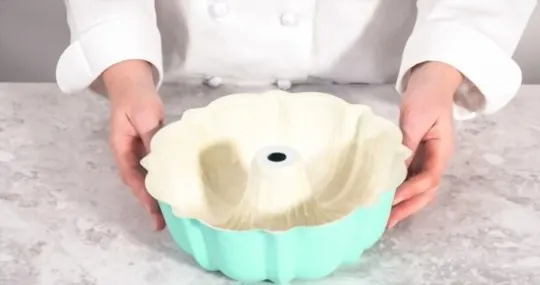
The 5 Best Substitutes for Vegetable Shortening
Ingredients
- Lard
- Butter
- Coconut Oil
- Margarine
- Bacon Fat
Instructions
- Pick your favorite substitute from the list above.
- Follow cooking directions for your selected substitute with the proper ratio of ingredients.

Andrew Gray is a seasoned food writer and blogger with a wealth of experience in the restaurant and catering industries. With a passion for all things delicious, Andrew has honed his culinary expertise through his work as a personal chef and caterer.
His love for food led him to venture into food writing, where he has contributed to various online publications, sharing his knowledge and insights on the culinary world. As the proud owner of AmericasRestaurant.com, Andrew covers a wide range of topics, including recipes, restaurant reviews, product recommendations, and culinary tips.
Through his website, he aims to inspire and educate fellow food enthusiasts, offering a comprehensive resource for all things food-related.

Leave a comment